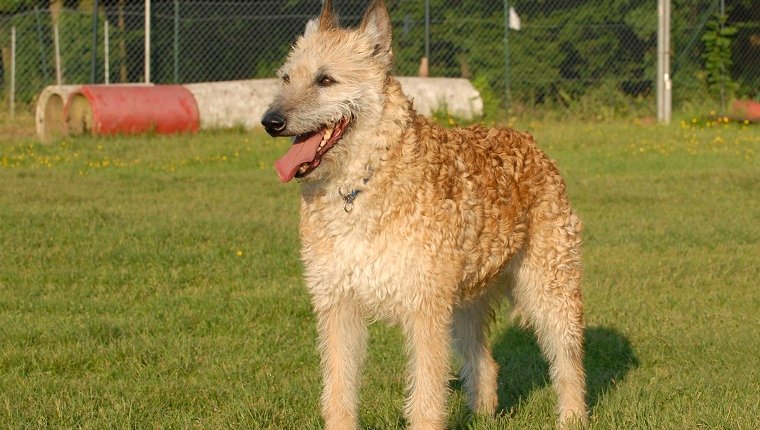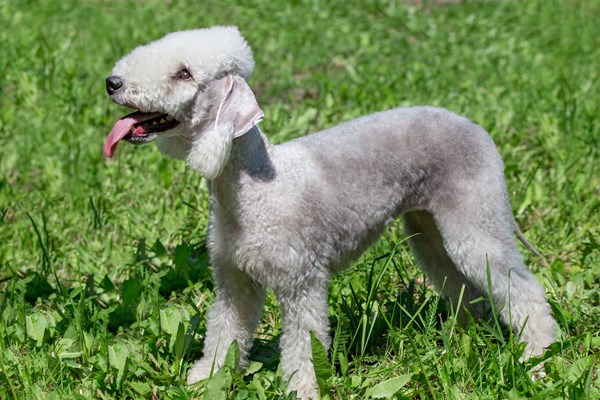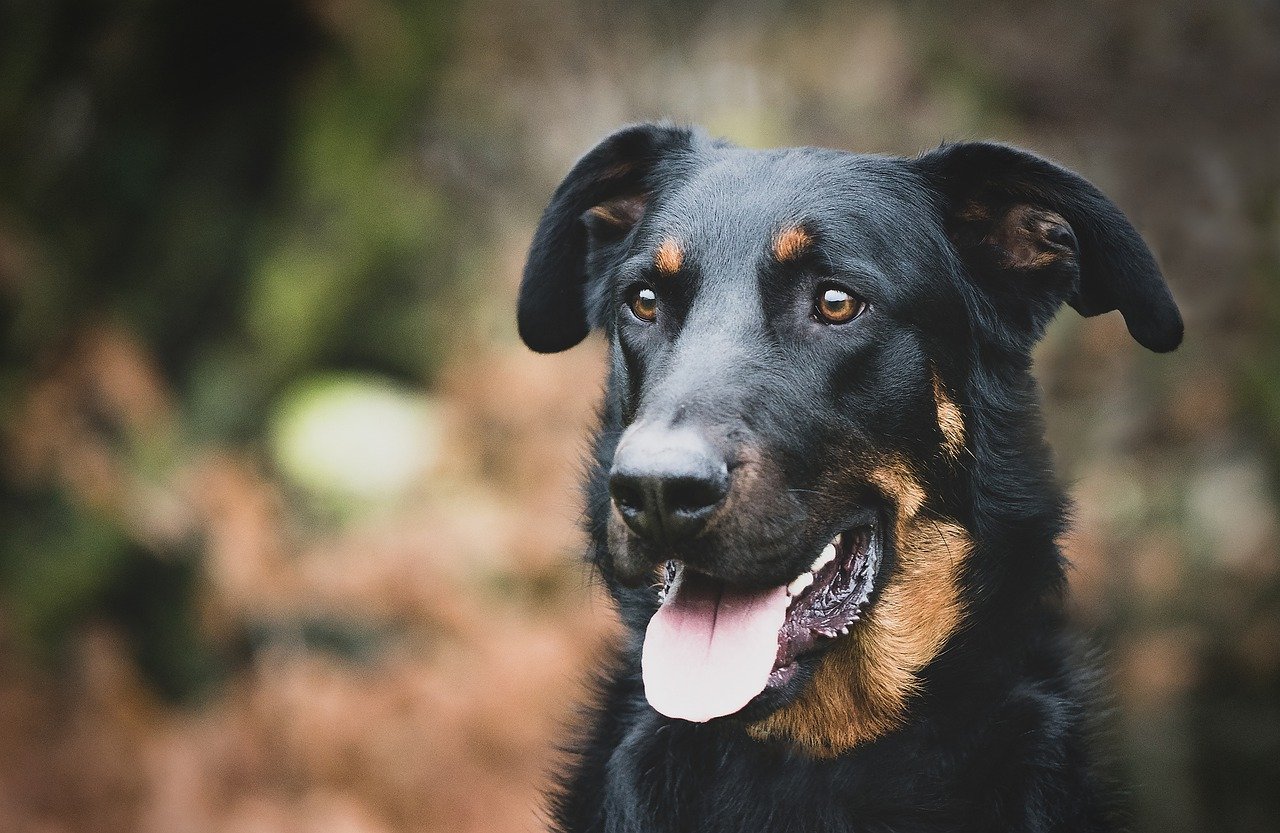The Alaskan Husky Dog Overview
The Alaskan Husky is not a purebred dog. Its purpose is defined solely by its function as a very efficient sled dog.
The husky is a crossbreed of several Northern breeds selected for their ability to pull.
Within the category, there are several subtypes, including freighting dogs (Mackenzie River husky, Malamute), sprint Alaskans (Eurohound), and distance Alaskans.
Alaskan Huskies are largely bred for their ability to work. They have better endurance than Siberian Huskies in sled racing.
This joyful dog is gentle and lively and adores his or her family. They are intelligent, friendly, and affectionate, easy-going, and docile, however they do have a lot of activity, particularly as puppies.
They are excellent with youngsters and friendly with strangers; yet, they are not watchdogs, as they bark infrequently and adore everyone.
Huskies are highly clever and trainable, but they have their own minds and will obey an order only if they understand the purpose, and if you do not demonstrate leadership, they will see no reason to obey you.
Patience, consistency, and an understanding of the Arctic dog’s personality are required for training.
Alaskan Husky Highlights
- The Alaskan Husky is bred to be the ultimate sled dog. They can easily burn 10,000 calories a day in the grueling race.
- The Alaskan Husky is an athletic working dog that arose from a cross between several similar yet distinctive breeds.
- Capable of enduring harsh climates of the frigid north, the Alaskan Huskies are excellent sled dogs and companions that belong to the spitz group.
- The Alaskan Husky is one of the most common sled dogs in the world.
Alaskan Husky Breed Features & Ratings:
Rated base on a 5 Star Scale
ENERGY LEVEL: 4 Star
EXERCISE REQUIREMENTS: 5 Star
PLAYFULNESS: 5 Star
AFFECTION LEVEL: 4 Star
FRIENDLINESS TO DOGS: 5 Star
FRIENDLINESS TO OTHER PETS: 1 Star
FRIENDLINESS TO STRANGERS: 5 Star
WATCHFULNESS: 5 Star
EASE OF TRAINING: 5 Star
GROOMING REQUIREMENTS: 3 Star
HEAT SENSITIVITY: 5 Star
VOCALITY 5 Star
Alaskan Husky Characteristics:
- Dog Breed Group: Working Dogs
- Height: 20-24 inches (51-61 cm)
- Weight: Male: 40-60 pounds (18-27 kg) Female: 35-48 pounds (16-22 kg)
- Life Span: 10 to 15 years
- Type: Cross breed
- AREA OF ORIGIN: United States
- DATE OF ORIGIN: Unknown
- OTHER NAMES: None
- Temperament: Agile, Alert, Energetic, Powerful, Protective, Sensitive
- Activities: Sledding, Skijoring, Obedience, Agility
- Color: Black, Blonde, Gray, Orange, White
- Litter Size: 4 to 10 puppies
- Puppy Prices: Between $1000 to $1500 USD on average
Alaskan Husky Health:
A reputable breeder will be candid and forthright about the breed’s health concerns and the frequency with which they arise in her lines.
Alaskan Huskies may get lysosomal storage disease, as well as a variety of visual disorders, including progressive retinal atrophy.
They may also develop hypothyroidism, a common hormonal disorder in dogs.
At the very least, the breeder demonstrates that both of the puppy’s parents have excellent, good, or fair hip scores from the Orthopedic Foundation for Animals or a PennHIP score, as well as eye certification from the Canine Eye Registry Foundation.
Alaskan Husky Grooming:
These dogs’ double coats require grooming at least once or twice a week to remove stray hair and avoid matting.
Once the shedding season begins, brushing the dog once a day may be necessary.
This should be supplemented with an occasional ear cleaning, adequate dental hygiene, and frequent nail clipping if the nails become unmanageable.
Alaskan Husky Exercise:
Given how quickly these dogs can pick up on human directions, it may surprise you to hear that they may be a touch rebellious and difficult.
It is important to begin training this dog immediately, as early as eight weeks of age, when it is still malleable and trainable.
If you wait until it is more than six months old, training it will almost certainly be more difficult.
The most effective strategies for coaxing your dog into embracing its training are positive and patient reinforcement.
Alaskan Husky Training:
These are not dogs for the faint-hearted. This is a powerful, athletic dog with incredible stamina.
After all, it was developed specifically to tow large sleds through the snow.
Every day, the dog will need at least an hour of exercise, although moderate walks alone will not be sufficient.
This group should engage in a variety of demanding activities, including free running, hiking, sports, games, and other strenuous activities.
Allowing your dog to run free is not always a good idea, since it does have a tendency to stray and explore. A gated yard is quite beneficial for restraining these natural urges.
Alaskan Husky Food and Nutrition:
An active adult dog requires a high-quality diet that is high in protein and fat.
The amount of food consumed is determined by the animal’s size, age, and level of activity.
Given its proclivity for gaining weight, owners should minimize snacking.
Alaskan Husky Temperament and Personality:
On a three-dog night, the Alaskan Husky makes an excellent companion.
He is normally affectionate and has a propensity for snuggling, which he uses to stay warm while out on the route with his sled companions.
He is a cooperative member of the pack and gets along well with both humans and other dogs. When he leaps up on you, it is out of a desire to make friends.
This is not a dog for someone whose idea of exercise is a block walk. He is constantly on the move and will exhaust you long before he considers himself exhausted.
Choose him if you enjoy training for marathons or triathlons on a consistent basis. When he isn’t giving you a workout, he enjoys digging holes and is a huge foodie.
He might be a superb hunter as a result of the hounds and sports breeds that are occasionally a part of his genetic makeup.
When he is on the prowl, cats, squirrels, birds, and other creatures should be cautious. Maintain a leash on the Alaskan Husky unless you are in a secure enclosed environment.
If he flees, you will be unable to apprehend him. He is capable of running for miles upon miles upon.
His middle name is adventure, and exploring is his game. It is critical to have a solid, extra-tall fence. Alaskans are excellent jumpers.
The Alaskan Husky is more brawny than intelligent, yet some exhibit considerable intelligence. Never put an Alaskan Husky in his place; he may surprise you.
Begin training your dog the day he comes home. Even at the age of eight weeks, he is capable of absorbing whatever you teach him.
Do not wait until he is six months old to begin teaching him; otherwise, you will be dealing with a more headstrong dog.
If at all feasible, enroll him in puppy kindergarten by the time he is 10 to 12 weeks old, and socialize him often.
However, many puppy training classes require current vaccinations (such as kennel cough), and many veterinarians advocate limiting exposure to other dogs and public locations until puppy vaccines (such as rabies, distemper, and parvovirus) are finished.
In lieu of official training, you can begin socializing and training your puppy at home until puppy immunizations are done.
Speak with the breeder and discuss the characteristics you’re looking for in a dog, as well as requesting aid in picking a puppy.
Breeders interact with their puppies on a regular basis and can give astonishingly accurate recommendations once they learn about your lifestyle and personality.
Whatever you’re looking for in an Alaskan Husky, aim for one whose parents have pleasant personalities and has been well socialized from infancy.
Alaskan Husky Care/Upkeep:
The Alaskan Husky’s coat is self-cleaning, comparable to that of the Alaskan Malamute or Siberian Husky, which are closely related breeds.
As a result, it has a low tendency to stink and requires only rarely bathing and cleaning. Shedding happens only once a year, during the spring season, and does not occur on a year-round basis; hair is not shed all year.
The Alaskan Husky is a very energetic animal with almost inexhaustible reserves of energy.
It does appropriate in an urban residential setting since it requires a steady supply of physical activity. It is best for the Alaskan Husky to have a large yard and a well-kept residence.
Alaskan Husky Relationship with Children and Other Pets
Especially suitable for families with young children, these canines are a terrific choice.
People of all ages will be drawn to them because of their warm and fun demeanor.
Alaskan Husky Names
| Rank | Boy Names | Girl Names |
| 01 | Buddy | Molly |
| 02 | Max | Lucy |
| 03 | Toby | Coco |
| 04 | Jack | Luna |
| 05 | Bear | Sadie |
| 06 | Riley | Ellie |
| 07 | Oliver | Sasha |
| 08 | Bailey | Stella |
| 09 | Leo | Nala |
| 10 | Sammy | Lulu |
All About Alaskan Husky
The Alaskan Husky is a working sled dog, not for appearance or pedigree, and there is no standard formula for producing him.
He is typically bred from several spitz-type dogs and inherits their unique prick ears, although his appearance varies significantly in other ways.
His coat, which is typically short to medium in length, can be any color or pattern, and he may have the wedge-shaped head characteristic of the spitz breed or a longer muzzle.
Typically, he is a medium-sized dog, weighing between 38 and 50 pounds.
Alaskan Huskies are bred for a variety of sledding disciplines: some are freighters, carrying big loads; others are sprinters, covering short distances rapidly; and yet others are long-distance runners.
The Alaskan Husky is sometimes viewed as a working or competitive dog rather than a household pet. He is an active dog and would perform best in a home where he had daily opportunities to run.
An athletic owner who can satisfy this dog’s intense urge to run and pull will make him happy, but an owner who leaves the dog alone in the house or backyard will return to an epic scene of damage.
Alaskan Huskies are excellent hiking and backpacking companions and are naturals at dog sports like sledding and skijoring.
Additionally, you will witness them excel in agility, herding, obedience, and rally.
The Alaskan Husky is bright and easy to teach using positive reinforcement tactics such as praise, play, and food rewards, due to his ancestry as a hard-working sled dog.
Having said that, he prefers to do things his way. Maintain a firm stance and keep training exciting.
Alaskan Husky History:
The Alaskan Husky, though not officially recognized as a breed in and of itself, is the result of the cross-breeding of several different breeds.
A working dog’s aim in breeding is to produce the best working dog possible, hence the bloodlines utilized in breeding an Alaskan Husky will be determined by the precise function for which the Alaskan Husky will be used.
A racing sled dog, for example, could be any combination of husky and purebred pointer or hound, depending on whether the dog is required to go long distances or sprint at high speeds.
Native Inuit dogs were used to create the first Alaskan Huskies, which were then developed further by mushers (human dog sled racers) from a variety of various bloodlines.
The Eskimo dog, the Siberian Husky, the Greyhound, and the German Shorthaired Pointer are some of the key breeds that are now being employed in the development of Alaskan Huskies.
Where to Adopt Alaskan Husky:
Due to their mixed breed status, it may be difficult to locate a breed-specific rescue for Afadors.
However, you may like to contact breed-specific rescues for Alapaha Blue Blood as they frequently care for mixed breeds as well.
More Dog Breeds and Further Research:
If you like a spitz-type sled dogs, you might be interested in the following breeds of dogs.
Alaskan Husky Fun Facts:
- The Alaskan Husky is a type of dog, not a breed. He does not have a breed standard; each breeder selects for the characteristics that are most significant to them.
- Alaskan Huskies come in a variety of colors and breeds. Dogs used in freighting pull big goods. Sprinters cover short distances quickly. Other canines possess the stamina necessary to travel vast distances.
- Alaskan Huskies considered to be excellent racing dogs are worth between $10,000 and $15,000 or more.
- Alaskan Huskies’ coats are normally short to medium in length and can be any color or pattern.
Frequently Asked Questions (FAQs):
The Alaskan Husky may be a wonderful companion for a family. He is affectionate with people and other dogs, and he is well-known for being a cuddler with a lot of energy. He enjoys being in the company of his human family and is well-known for jumping on people out of affection rather than to assert power over them.
It is a cross between northern spitz dogs (such as the Siberian Husky and the Alaskan Malamute) and a type of European spitz dogs (such as the German Spitz).
Huskies are difficult to train and will present a significant challenge to first-time dog owners.



